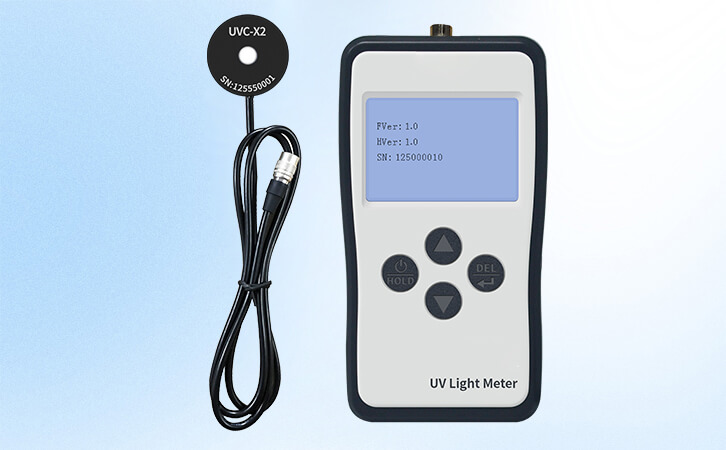
86125 UV Light Meter +UVC-X2 Probe
Optimized for 222nm Far-UVC Germicidal Lamps
Spectral response range: 210–250nm
Simultaneous measurement of power and energy
Measurement range up to 200,000 μW/cm²
Comprehensive statistical features
The 86125 UV Light Meter is a versatile device designed to support up to 12 different probes. Its primary function is to display measurement data. One of these probes, the UVC-X2, works seamlessly with the 86125 host unit. With a spectral response of 210–250nm and a maximum measurable intensity of 200,000 μW/cm², it is specifically designed to monitor the output of 222nm far-UVC light sources.
Compared to other UVC wavelengths, 222nm far-UVC lamps are considered safer for human exposure, making them widely used in medical environments, air purification systems, water treatment, and other disinfection applications. These include air sterilizers, medical-grade UV lamps, and UV disinfection gateways. A portable UV meter like the 86125 combined with the UVC-X2 probe is essential for accurately measuring the irradiance of these 222nm UV light sources.
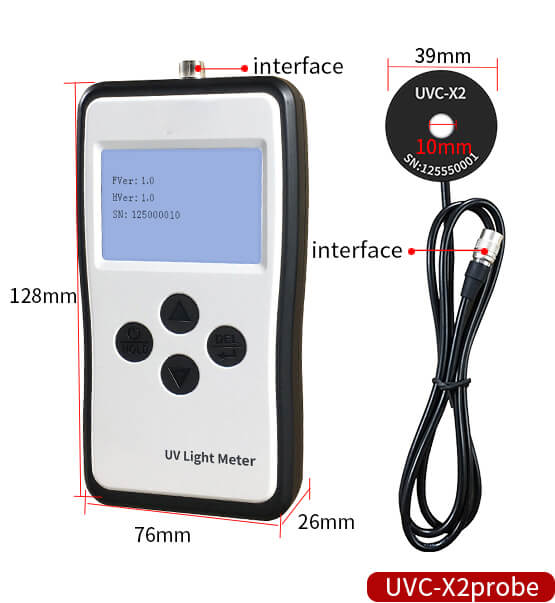
Parameters
| Parameters | UVC-X2 Probe |
|---|---|
| Spectral Response | 210nm-250nm,λp = 222nm |
| Power Measuring Range | 0 - 200000μW/cm² |
| Resolution | 0.1μW/cm² |
| Energy Measuring Range | 0 - 9999999μJ/cm² |
| Record Time | 0 - 99999S |
| Measuring Accuracy | H<50μW/cm²:±5μW/cm², |
| H>=50μW/cm²:±10%H,(H is the standard value) | |
| Sampling Speed | 6times/second |
| Optional Unit | μW/cm² (default),mW/cm²,W/m² |
| Test Hole Diameter | Φ10mm |
| Probe Size | Diameter 39mm × thickness 15mm; |
Features
210–250nm Spectral Range with 222nm Peak Sensitivity
The UVC-X2 probe features a spectral response between 210nm and 250nm, optimized for a peak at 222nm. It is purpose-built to measure the power and energy output of UVC sterilization sources.
Designed for 222nm Far-UVC Lamp Testing
This probe is ideal for evaluating the performance of 222nm far-UVC lamps used in air purification units, medical germicidal lights, and disinfection gateways.
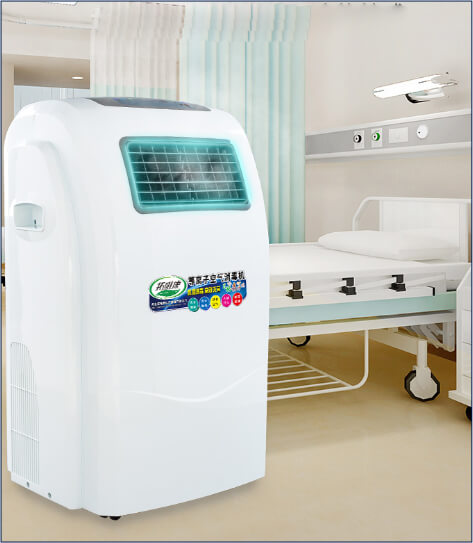
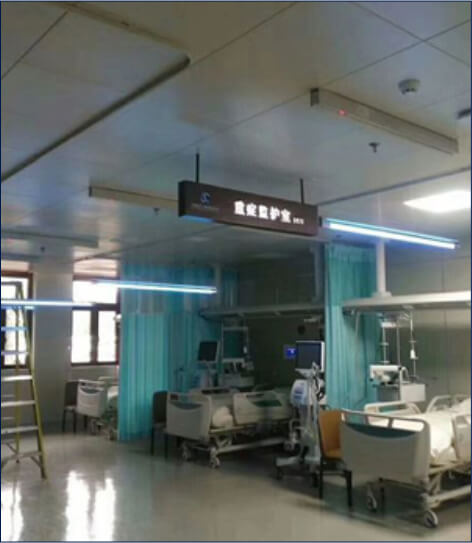
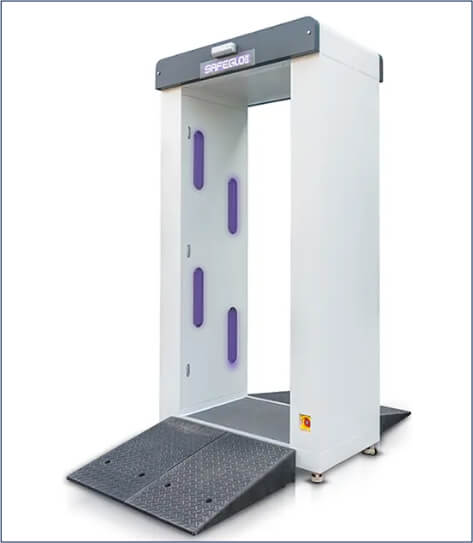
Advanced Digital Probe Technology
The UVC-X2 utilizes advanced digital probe technology that handles data collection and processing internally. This minimizes external interference and enhances measurement accuracy.
High Measurement Capacity: Up to 200,000 μW/cm²
Capable of measuring UV power levels up to 200,000 μW/cm², making it suitable for high-output applications.
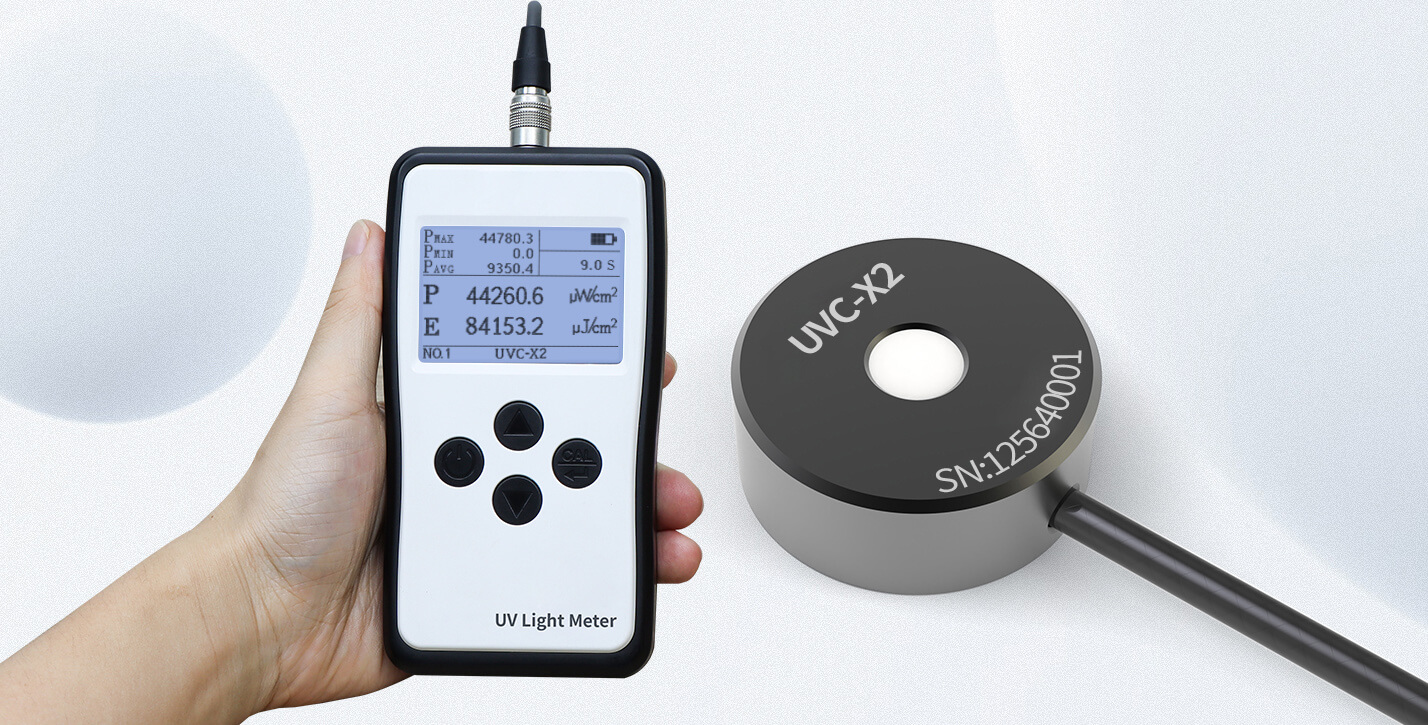
Comprehensive Statistical Display
The device can simultaneously display real-time, maximum, minimum, and average power values, offering a complete picture of UV output.

Multiple Measurement Units Available
Choose between μW/cm², mW/cm², and W/m² units freely, allowing flexibility and reducing the risk of conversion errors.

FAQ
-
1. The difference between UVC-X0, UVCWP-X1 and UVC-X2 UV probe for 86125 UV light meter host
UVC-X0 and UVCWP-X1 probes are suitable for detecting 254nm low-pressure mercury germicidal lamps, UVC-X2 probe is suitable for 222nm UV germicidal lamps. The UVCWP-X1 probe is a waterproof probe with 1m waterproof depth.
-
2. Whether a traceable calibration certificate is included?
UVC-X0 and UVCWP-X1 are mainly used to detect 254nm low-pressure mercury germicidal lamps, and the UVC-X2 probe is suitable for 222nm UV germicidal lamps. All three probes can be ensured to pass the inspection of the Metrology Institute and obtain a calibration certificate (approved by CNAS and ilac-MRA). The cost of the calibration certificate is about US$200 ; but the UVCLED-X0 probe is professionally used to detect UVC LED light sources. There is no unified inspection standard for LED light sources, each light source and UV energy meter manufacturer has their own calibration standards. We can provide the factory calibration reports for UVCLED-X0 probe, but no calibration certificates can be provided.
-
3. What's the working temperature of the UV probes?
The 11 UV probes of the 86125 UV light meter are not heat-resistant. The probe can be used for a long time at 80℃ or lower. If the temperature is higher than 80℃, it is recommended to use UV energy meter for UVA light source detection.